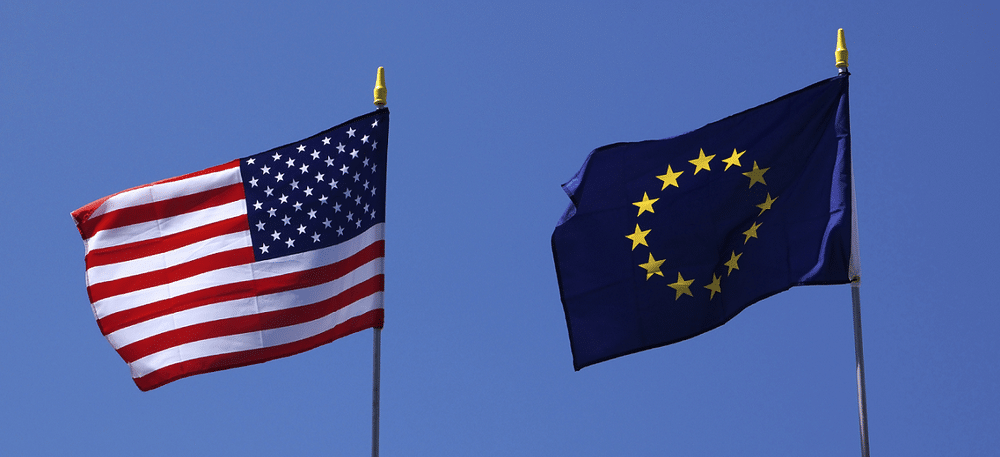The U.S. government yesterday rejected a request by the European Union (EU) to exempt European solar imports into the U.S. from the harshest tariffs.
In a joint filing to the World Trade Organization (WTO), the EU’s assertion that the higher prices and lower volumes of its solar goods were “not causing any serious injury” to the U.S., and thus should not be penalized as severely, was dismissed by Washington.
The EU had asked that its crystalline silicon solar imports be instead subjected to a Minimum Import Price (MIP) or quota allocation by country, but such suggestions also fell on deaf ears, leaving the two trading blocks at an impasse.
There has been no further agreement on the appropriate form of compensation, meaning that the tariff measures first outlined under Section 201 will apply to EU-produced components. Both the U.S. and the EU did stress in the WTO filing, however, that they will “agree to monitor the impact of the measures on the trade flows and continue these discussions”.
President Donald Trump imposed a unilateral trade tariff of 30% on solar panels in January as part of his America First agenda that seeks to erect protectionist measures against the perceived threat of foreign competition.
The WTO permits such tariffs – officially called safeguard tariffs – when a country can prove it is facing a sudden and potentially injurious wave of imports of a particular product, in this case solar modules largely from China.
The safeguard tariffs do contain some caveats, however, chiefly that countries on the receiving end of such measures should be compensated for in other trade areas. One other retaliatory measure allowed is for such countries to impose their own trade barriers on the U.S. Taiwan is expected to take this option.
Following the introduction of the Section 201 tariffs, the EU, China, South Korea, Taiwan and Malaysia all began proceedings to extract some form of compensation from the U.S. According to the WTO filing seen by pv magazine, representatives of the U.S. and the EU met on February 15 to examine this issue, but no agreement was reached, thus resulting in yesterday’s announcement.
While Trump’s decision to impose safeguard tariffs won him some backers in the U.S., the solar industry has complained that once again roadblocks were being erected in the path of solar’s growth. The Solar Energy Industries Association (SEIA) calculated in February that the tariffs could lead to 23,000 fewer jobs than its base case over the next four years.
The effects are already being felt: in late February SunPower announced that 150 – 250 staff would be losing their jobs, laying the blame on Section 201.
This content is protected by copyright and may not be reused. If you want to cooperate with us and would like to reuse some of our content, please contact: editors@pv-magazine.com.








By submitting this form you agree to pv magazine using your data for the purposes of publishing your comment.
Your personal data will only be disclosed or otherwise transmitted to third parties for the purposes of spam filtering or if this is necessary for technical maintenance of the website. Any other transfer to third parties will not take place unless this is justified on the basis of applicable data protection regulations or if pv magazine is legally obliged to do so.
You may revoke this consent at any time with effect for the future, in which case your personal data will be deleted immediately. Otherwise, your data will be deleted if pv magazine has processed your request or the purpose of data storage is fulfilled.
Further information on data privacy can be found in our Data Protection Policy.